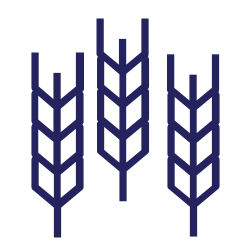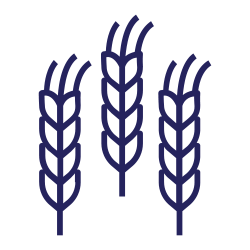Optimum nitrogen fertilizer management strategies for high-yielding spring wheat in Manitoba
Crop Types
- Wheat
Collaborating Locations
University of ManitobaBackground
Researchers completed 8 site-years of field trials during the 2016-2017 growing seasons. The total N supply (soil test NO3-N + fertilizer N) required to obtain economic optimum yield and protein varied, however, if we exclude the hail damaged site at Carman 2016, the average total N supply at the optimum yield and protein content was 1.99 lb N/bu. This requirement is less than the current recommendation of 2.5 lbs N/bu.
Midseason split application at planting and at stem elongation or flag leaf stages yielded at least as much as equivalent rates applied entirely at planting. Flag leaf split applications consistently increased grain protein content compared to equivalent rates of N split applied at planting and stem elongation.
Late season post-anthesis N applications consistently increased grain protein content, regardless of N source. However, post-anthesis applications of urea solution increased grain yield and protein content above that for post-anthesis applications of UAN. There was no advantage to ESN blends over conventional urea when applied banded at seeding under the environmental conditions of our study."
Objectives
- Determine appropriate rates for N, based on realistic yield and protein goals for new high yield potential varieties (e.g., the overall supply of N required on a per bushel basis).
- Determine the most effective and efficient combinations of timing, placement and source, especially for midseason top-up applications.
- Evaluate some innovative soil tests for measuring the amount of organic soil N that can be released by mineralization during the growing season.
- Develop decision tools for midseason evaluation of yield and protein sufficiency.
Results
- Optimum Nitrogen Management for Modern Corn Hybrids in Manitoba: Final Technical Report
- Optimum Nitrogen Fertilizer Management Strategies for Modern Corn Hybrids in Manitoba: Final Project Report
Key Takeaways
- On average, total N supply to achieve optimum yield and protein was 1.99 lb N/bu. This is less than the current recommendation of 2.5 lbs N/bu
- Mid-season split N application at planting and at stem elongation or flag leaf yielded as much as equivalent rates applied entirely at planting. Under certain scenarios, split N application may increase grain protein content
- Mineralization tests may predict 'potential' mineralization, but their ability to predict 'actual' mineralization under field conditions is limited
- Indices to predict yield (greenSeeker and SPAD Meter) were reasonable reliable when combined across all site years, especially at flag leaf
- Post-harvest soi lNO3-N can be used as an auditing tool to determine if supply of N was excessive to meet yield and protein of wheat in a particular field and year.




















